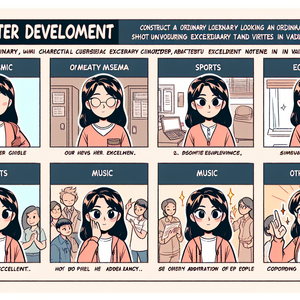Women in Engineering: Breaking Barriers in Popular Fields

According to the National Science Foundation, women now earn nearly 20% of all engineering degrees in the United States. While this figure reflects progress, it still falls short of gender parity. Fields such as civil, mechanical, and electrical engineering continue to be dominated by male graduates. Nonetheless, there is a noticeable uptick in women pursuing careers in these areas, challenging ingrained norms and setting the stage for future generations of female engineers. Notably, the most popular engineering jobs today, including software engineering, civil engineering, and environmental engineering, are witnessing increased female participation. As industries evolve, the inclusion of women is becoming essential for driving innovation and creative problem-solving. According to a study by McKinsey & Company, diverse teams are more effective, as they bring varied perspectives that enhance decision-making.
Popular Engineering Roles with Growing Female Representation
Among the engineering disciplines experiencing a rise in female representation, software engineering stands out. The booming technology sector has created a high demand for tech-savvy professionals, prompting companies to actively seek diverse perspectives. By implementing more inclusive hiring practices, organizations are not only addressing gender disparities but also fostering innovation, which is imperative in a fast-paced digital landscape. Civil engineering is another field witnessing increased female engagement. The contemporary focus on sustainable infrastructure and urban development aligns with women's growing involvement in the discipline. Historical figures like Emily Roebling, who played a pivotal role in the construction of the Brooklyn Bridge, serve as an inspiration for women today, demonstrating that significant contributions from women in large-scale projects are not only possible but vital.
Challenges Faced by Women in Engineering
Despite these advancements, women in engineering continue to confront various obstacles. One of the most significant barriers is the persistent gender bias prevalent in the workplace. Research indicates that women often face skepticism regarding their technical competence, which can undermine their confidence and limit their professional growth. A 2021 study published in the journal *Nature* found that women in STEM fields are more likely to receive negative feedback on their work than their male counterparts, thereby reinforcing stereotypes that question their abilities. Moreover, the scarcity of female role models in senior positions can dissuade young women from pursuing engineering careers. Representation in leadership roles is crucial for inspiring the next generation, as it provides tangible evidence that success in engineering is achievable.
Initiatives Promoting Gender Diversity in Engineering
To combat these challenges, numerous initiatives have been implemented to enhance gender diversity in engineering. Organizations like the Society of Women Engineers (SWE) and Women in Engineering (WIE) offer invaluable resources, networking opportunities, and mentorship programs aimed at supporting women in the field. These organizations also advocate for policy changes and corporate practices that foster equitable work environments. Educational institutions are increasingly acknowledging the significance of diversity in engineering. Programs designed to encourage young girls to explore STEM fields are gaining momentum. Initiatives such as STEM camps and workshops specifically tailored for young women play a crucial role in igniting interest and providing foundational skills. For instance, the "Girls Who Code" program has successfully introduced thousands of young women to the world of computer science, showing that targeted efforts can lead to increased female representation in engineering.
The landscape of engineering is undergoing a profound transformation, with women making significant strides in a field that has historically been unwelcoming. While challenges persist, the increasing presence of women in engineering roles is a testament to their resilience and determination. By fostering inclusive environments and providing support through various initiatives, the engineering community can continue to dismantle barriers and create a more diverse and innovative workforce. As we look to the future, the contributions of women in engineering will undoubtedly shape the industry for the better, ensuring it reflects the diverse society it serves. With ongoing efforts to address bias, enhance mentorship, and promote STEM education for girls, the path forward is filled with promise and potential for the next generation of female engineers.
Software Engineer (Frontend)
Google, Facebook, fintech and healthcare startups
Job Description
Design and implement user-facing features and interfaces for web applications using HTML, CSS, and JavaScript frameworks like React or Angular.
Collaborate with UX/UI designers to ensure a seamless user experience, and optimize applications for maximum speed and scalability.
Common Employers
Tech companies such as Google, Facebook, and startups in the fintech and healthcare sectors.
Required Skills
Proficiency with version control systems (e.g., Git)
Strong understanding of responsive design principles
Familiarity with RESTful APIs
Civil Engineer (Transportation)
Government agencies, engineering consulting firms, AECOM, Jacobs
Job Description
Plan, design, and oversee the construction of transportation infrastructure projects, such as roads, bridges, and transit systems.
Conduct traffic studies and collaborate with urban planners to improve mobility and accessibility in urban areas.
Common Employers
Government agencies
Engineering consulting firms
Large construction companies like AECOM and Jacobs.
Required Skills
Knowledge of civil engineering software (e.g., AutoCAD, Civil 3D)
Project management experience
Understanding of local and federal transportation regulations
Environmental Engineer
Environmental consulting firms, non-profits, EPA
Job Description
Develop solutions to environmental problems, including waste management, pollution control, and sustainable resource management.
Conduct environmental impact assessments and collaborate with regulatory agencies to ensure compliance with environmental laws.
Common Employers
Environmental consulting firms
Non-profits
Government agencies like the EPA.
Required Skills
Proficiency in environmental modeling software (e.g., HEC-RAS, SWMM)
Strong analytical skills
Knowledge of environmental regulations
Mechanical Engineer (Robotics)
Robotics companies, automotive manufacturers, MIT, NASA
Job Description
Design and develop robotic systems and automation solutions for manufacturing, healthcare, or research applications.
Work closely with interdisciplinary teams to integrate mechanical, electrical, and software components for functional prototypes.
Common Employers
Robotics companies
Automotive manufacturers
Research institutions like MIT or NASA.
Required Skills
Experience with CAD software (e.g., SolidWorks)
Programming languages (e.g., Python, C++)
Solid understanding of control systems
Data Engineer
Amazon, Microsoft, big data startups
Job Description
Build and maintain scalable data pipelines that support data collection, storage, and processing for analytics and machine learning applications.
Collaborate with data scientists and analysts to optimize data flow and ensure data quality across various platforms.
Common Employers
Tech giants like Amazon and Microsoft
Startups specializing in big data solutions.
Required Skills
Proficiency in SQL and NoSQL databases
Experience with ETL tools (e.g., Apache Airflow)
Knowledge of cloud technologies (e.g., AWS, Azure)


